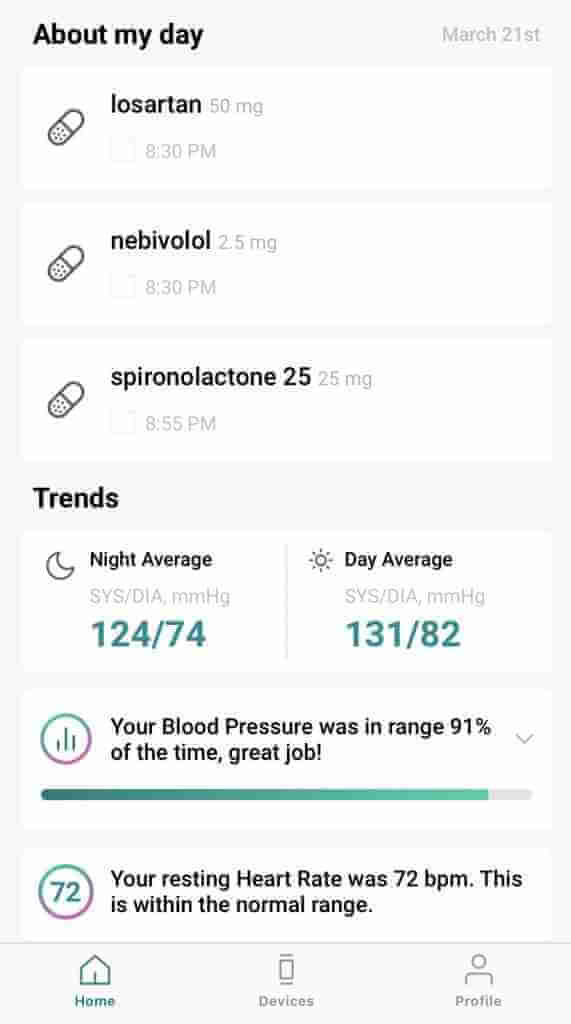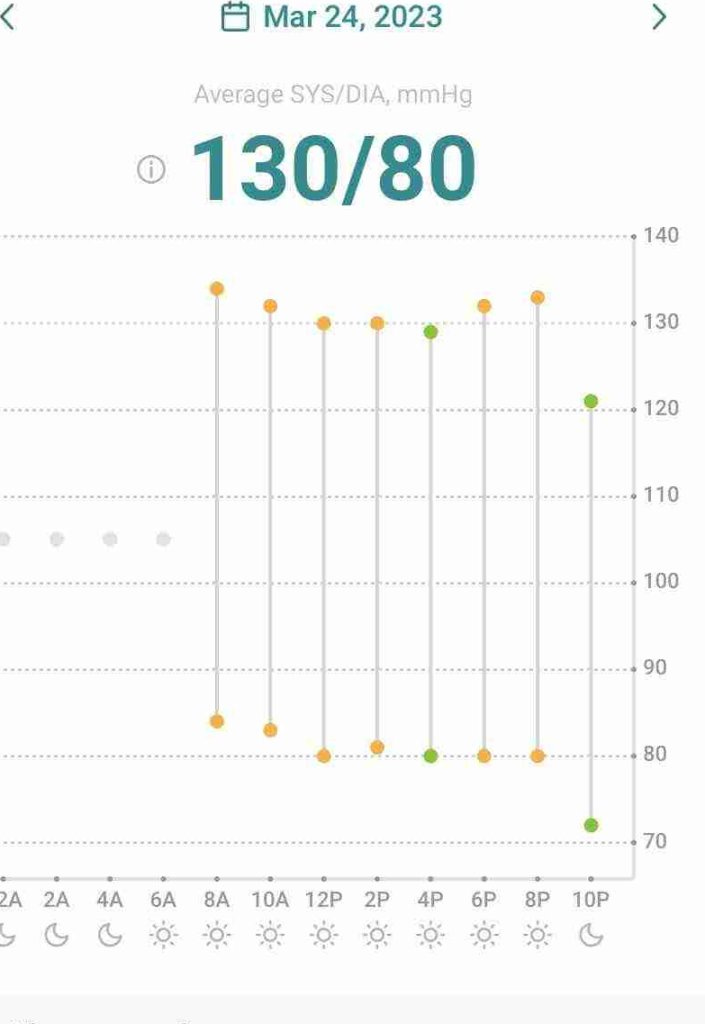The Aktiia Bracelet is Almost Here
An accurate 24/7 Cuffless Ambulatory Blood Pressure Monitor for the masses
For the last several weeks I’ve been wearing a small, unobtrusive bracelet on my right wrist which has been silently monitoring my blood pressure on a regular basis. Based on my initial evaluation and given the extensive validation the company has performed I believe this device has the potential to transform the management of hypertension.
This remarkable BP monitoring bracelet is made by Aktiia, a biotech startup founded in Switzerland in May 2018 and is not yet available in the US. I was contacted by Aktiia on the basis of my articles on home BP monitoring and wrist BP cuff-based devices.
Long-time readers of TSC will recognize that I have identified several limitations to the wrist-based monitoring technology which I felt limited widespread utility.
Cuffless versus standard BP monitors
The standard method for measuring blood pressure involves pumping a bladder inside an arm cuff with air and occluding the blood going down the artery. The inflatable cuff is utilized when health care workers take a manual blood pressure and when automatic devices use an oscillometric estimation of the blood pressure. This method is the gold-standard upon which trials have relied which have demonstrated the value of controlling blood pressure.
In the last 5 years, the market has been flooded with cuffless wrist BP devices with over 500 on the market to Australians by 2020. Most of these have not been validated
The Aktia Bracelet is an exception as it has published validation studies stretching back to 2017.
The AB measures optical photo-plethysmographic (PPG) signals at the wrist and performs an analysis of the arterial pulse wave obtained. After an initialization (calibration) procedure with a supplied upper arm BP cuff device is performed the AB makes multiple measurements and generates an average of systolic BP, diastolic BP and HR every two hours.
A 1 month validation study published in the journal, Blood Pressure Monitoring in 2021 found the device satisfied criteria 1 and 2 of a modified ISO81060-2 protocol.
What I Experienced
The box Aktia sent me contained the measuring bracelet, a standard upper arm blood pressure cuff, USB charging cables and a small stand that creates an interface between the bracelet and the charging stand.
Setup requires downloading the Aktia app which pairs by Bluetooth with both the bracelet and the BP cuff.
Initialization involves sitting quietly while the BP cuff makes 3 measurements and synchronizes with the bracelet on your wrist.
I found the whole process simple and without glitches.
Once the bracelet is on your wrist you don’t have to mess with it at all. It just starts making periodic assessments of your BP throughout the day and night. As there is no cuff you don’t notice this at all.
If you want to see those measurements you open up the app and sync the app with the bracelet.
How It Worked
As promised the bracelet is unobtrusive. I wore it on my right wrist with my Apple Watch on my left wrist. I wore it to bed and it didn't bother me at all. I wore it during cardio and resistance workouts. I took it off for showers.
The Through all manner of activities, the device was making recordings and at the end of the day it was pretty fascinating to see what my BP had done.
A full day's worth of BP recordings with average systolic represented by top dots and diastolic below. BPs represent an average of the preceding 2 hours.
Note the drop during sleeping hours.
The dots are color-coded according to whether BP is normal or high.
The app also displays your nightly average BP and daytime BP and you can add medications and note activities, food, or other items
Note that the drop in BP at nighttime
The app also gives encouragement.
Great job!!
It should be noted that the AB has an accelerometer that detects motion. If motion is detected it will not make a BP measurement. It will try again, attempting to obtain a certain number of measurements during a two-hour interval. Occasionally, during the 2 weeks that I wore the AB, I noted intervals where I was particularly active during which the device did not record a BP.
Was it Accurate?
The main limitation I identified for cuff-based wrist BP monitors was a difference in wrist BP versus upper arm BP that varied from one person to the next:
Because of this individual variation I highly recommend users calibrate the OHG (or any wrist-based BP cuff) versus a standard BP cuff over a series of days with multiple measurements to see how the two measurements compare. If you find a consistent over or underestimate then the device can be used with this known adjustment.
The Aktiia process requires such a calibration upon initialization and has you repeat it once per month. I think this is a huge step forward for wrist-based BP monitoring. I repeated the initialization every couple of days.
Given that I didn't know exactly when the device was making its measurements I can't comment on its accuracy on me but I know it is superior to any wrist BP monitor that doesn't utilize calibration against a standard cuff BP monitor.
Aktiia has received its CE mark as a Class lla medical device, meaning that the device has been assessed to meet safety, health and environmental protection requirements in Europe.
I have reviewed the published literature on the accuracy of the AB which Aktia has prominently placed on its website for all to read. Company employees were involved in the validation studies but the lead author is a legitimate academic at Lausanne University and the papers were published in respected, peer-reviewed journals.
I did a few things to estimate the range my BP was in during the time interval the Aktia was generating a 2-hour average. In general, there was good correspondence.
In this set of Aktia recordings, the average BP between noon and 2 PM was recorded as 130/80.
When I sat down to record my BP shortly before 2 PM I recorded a BP of 130/78 initially and after 5 minutes of sitting at rest the BP had slowly dropped to 122/74
Significance of 24-hour home blood pressure monitoring
In the United States, hypertension accounts for more CVD deaths than any other modifiable CVD risk factor and is second only to cigarette smoking as a preventable cause of death for any reason
Traditionally, doctors have relied on office-obtained BP measurements for treatment decisions but these are often not performed in a standard manner in busy clinics. In addition, many patients have white coat hypertension with hypertension noted in the doctor's office but not at home.
For these reasons, I feel home BP monitoring is essential when initiating and titrating BP medications. The 2020 International Society of Hypertension guidelines recognize this and state:
Out-of-office BP measurements (by patients at home or with 24-hour ambulatory blood pressure monitoring [ABPM]) are more reproducible than office measurements, more closely associated with hypertension-induced organ damage and the risk of cardiovascular events and identify the white coat and masked hypertension phenomena.
We tell patients to rest for 5 minutes before checking BP and to follow all of these guidelines in order to eliminate the marked variability in BP that any and all activities introduce.
Ambulatory BP monitoring utilizes a standard BP cuff attached to a recording device. Like the Aktiia Bracelet, ambulatory BP monitoring makes recordings throughout the day and night. Due to this ability to record nocturnal or sleep BP many authorities feel it is the gold standard for BP monitoring.
Normally BP drops during sleep, therefore 24 hour ABPM measurements are on average lower than patient-obtained home BP measurements which are lower than office-obtained BP measurements.
A failure of the sleep BP to drop has been identified as an independent risk factor for cardiovascular disease.
The Aktia Bracelet provides this kind of round-the-clock BP information to patients without them having to wear an obtrusive cuff on their arm and without the hassle of having a cuff inflating every 30 to 60 minutes during sleep.
It makes sense that having a continuous, inexpensive, and unobtrusive method for measuring blood pressure during a normal day and night would yield a more representative picture of the BP that our heart and major arteries face.
In turn, using a more accurate picture of the 24/7 hemodynamic load on the cardiovascular system for treatment goals should theoretically improve cardiovascular outcomes.
Aktiia is partnering with major academic centers in the US to evaluate whether the AB can deliver on this promise of improved outcomes and I eagerly await results from relevant trials.
Currently, I see a number of situations where I would utilize the AB in my patients which I'll describe in a future post.
Perisphygmomanometrically Yours,
-ACP











An infomercial from the skeptical cardiologist? Don't be absurd
That device has nothing to do with BP measurement. Any claims to cardiac arrest prediction highly suspect.